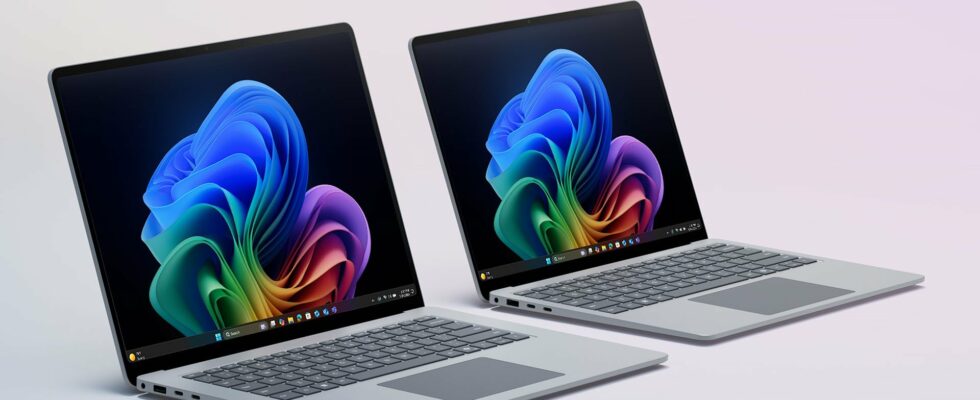Microsoft this week made its new Surface Laptop official, which aims to directly compete with Apple’s MacBook Air M3, both in terms of performance and energy efficiency. Here’s how the two machines fare on paper.
Microsoft’s announcements were numerous this Monday, May 20 as the manufacturer lifted the veil on the future of Windows 11 and Copilot, but also of a whole new generation of portable PCs labeled Copilot+.
It was also an opportunity to announce the new generation of Surface devices featuring the brand new Snapdragon X chip (Elite and Plus) with ARM architecture. Microsoft announces a Surface Laptop 7 up to 80% faster (than the Surface Laptop 5) and 50% more efficient than the MacBook Air M3.
While waiting to get our hands on the machine, let’s allow ourselves a little confrontation on paper of the two soon-to-be rival machines.
Surface Laptop 7 and MacBook Air M3 technical sheets
| Model | Microsoft Surface Laptop 7 (Snapdragon) | Apple MacBook Air 13 M3 2024 |
|---|---|---|
| Dimensions | 301mm x 17.5mm | 3041mm x 1130mm |
| Definition | 2304 x 1536 pixels | 2560 x 1664 pixels |
| Display technology | N/C | LCD |
| Touch screen | Yes | No |
| Processor (CPU) | Snapdragon X Elite | M3 |
| Graphics chip (GPU) | Qualcomm Adreno | Apple GPU |
| RAM | 16 GB, 32 GB | 8 GB, 16 GB, 24 GB |
| Internal memory | 256 GB, 512 GB, 1024 GB | 256 GB, 512 GB, 1024 GB, 2048 GB |
| Operating system (OS) | Microsoft Windows 11 | macOS |
| Weight | 1340 grams | 1240 grams |
| Depth | 220mm | 2150mm |
Product sheet | Product sheet See the test |
A truly “Elite” Snapdragon
The big news in the Surface range is of course this new Snapdragon X chip which wants to democratize the ARM architecture on PC, 4 years after Apple and its M1 chip. Qualcomm, and Microsoft, announce here superior performance to the very recent M3 chip unveiled last fall and already present in the brand’s MacBook Air and Pro.
On paper, the Snapdragon chip shows slightly higher specifications, with 12 cores clocked at up to 3.8 GHz for the high-end version and a “Dual Core Boost” mode that can climb to 4.2 GHz. For comparison, the Apple M3 chip in the MacBook Air maintains big.LITTLE operation with 4 performance cores coupled with 4 efficient cores that can climb to 4.05 GHz.
According to our benchmarks carried out last April at Qualcomm in London, the Snapdragon chip well outperformed the M3 in multi-core as well as in single-core, even if the Apple chip returned above Qualcomm on certain other synthetic benchmarks.
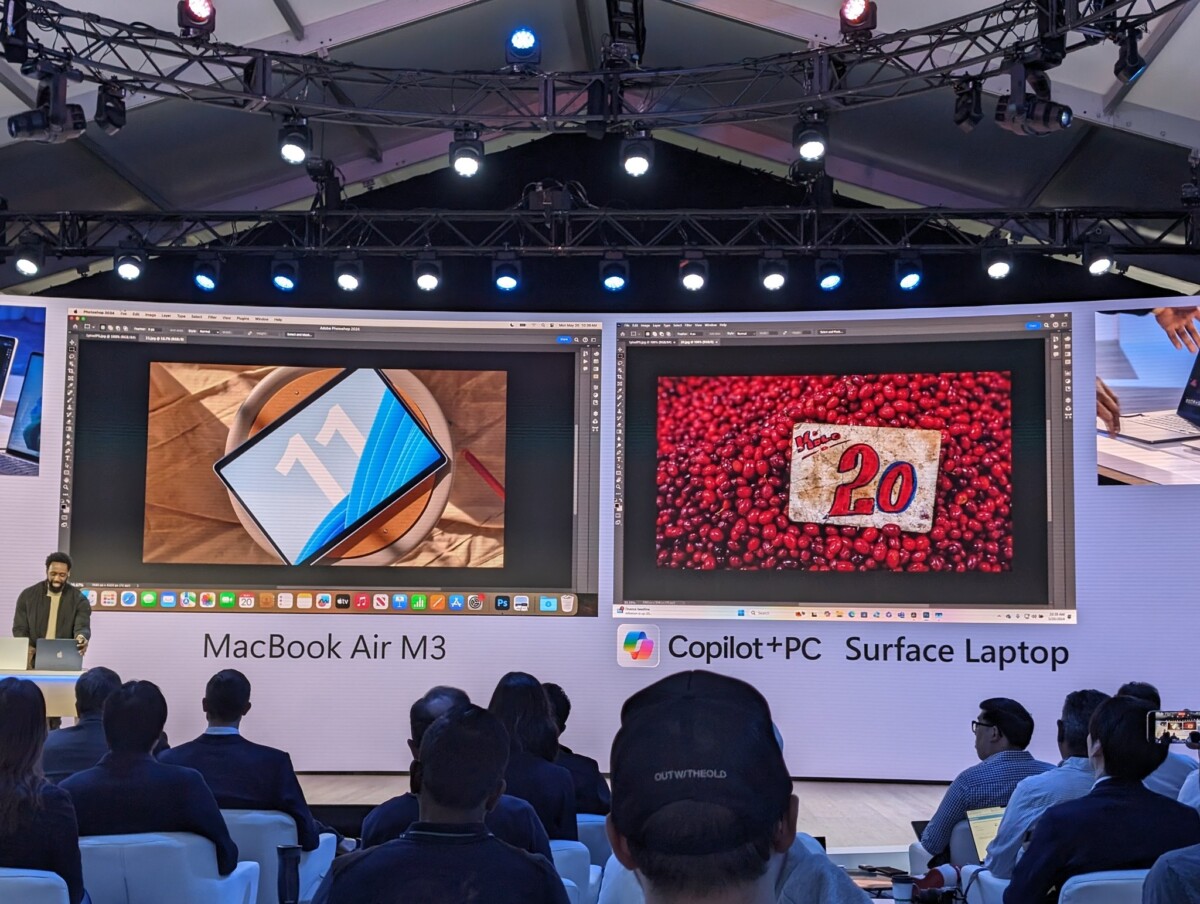
During its demonstration, Microsoft notably declared that the Surface Laptop 7 would be twice as fast as the MacBook Air M3 on Photoshop. The big unknown lies in the new Qualcomm Adreno architecture which, according to the manufacturer’s benchmarks, narrowly exceeds the GPU of Apple’s M2 chip.
Knowing that M3 had made a serious leap forward at this level, both in terms of raw performance and features (ray tracing, mesh shading, memory caching), we can say that the Surface Laptop 7 will not necessarily be more able to run graphically intensive games than the MacBook Air M3.
The case for autonomy
In addition to performance, Microsoft strongly emphasized autonomy when comparing its Surface Laptop with the MacBook Air M3. On paper, the two 13-inch versions both offer a battery between 52 and 54 Wh, but it is the efficiency of the chip that will decide between the two.
Despite the presence of more cores and the absence of “efficient” cores, Microsoft announced significant autonomy gains in its own tests: on a navigation test, the Surface Laptop reached 16 hours and 56 minutes, compared to 15 hours and 25 minutes for the MacBook. In (local) video playback, the Microsoft machine drains its battery in just over 20 hours, compared to 17 hours and 45 minutes for the MacBook Air.
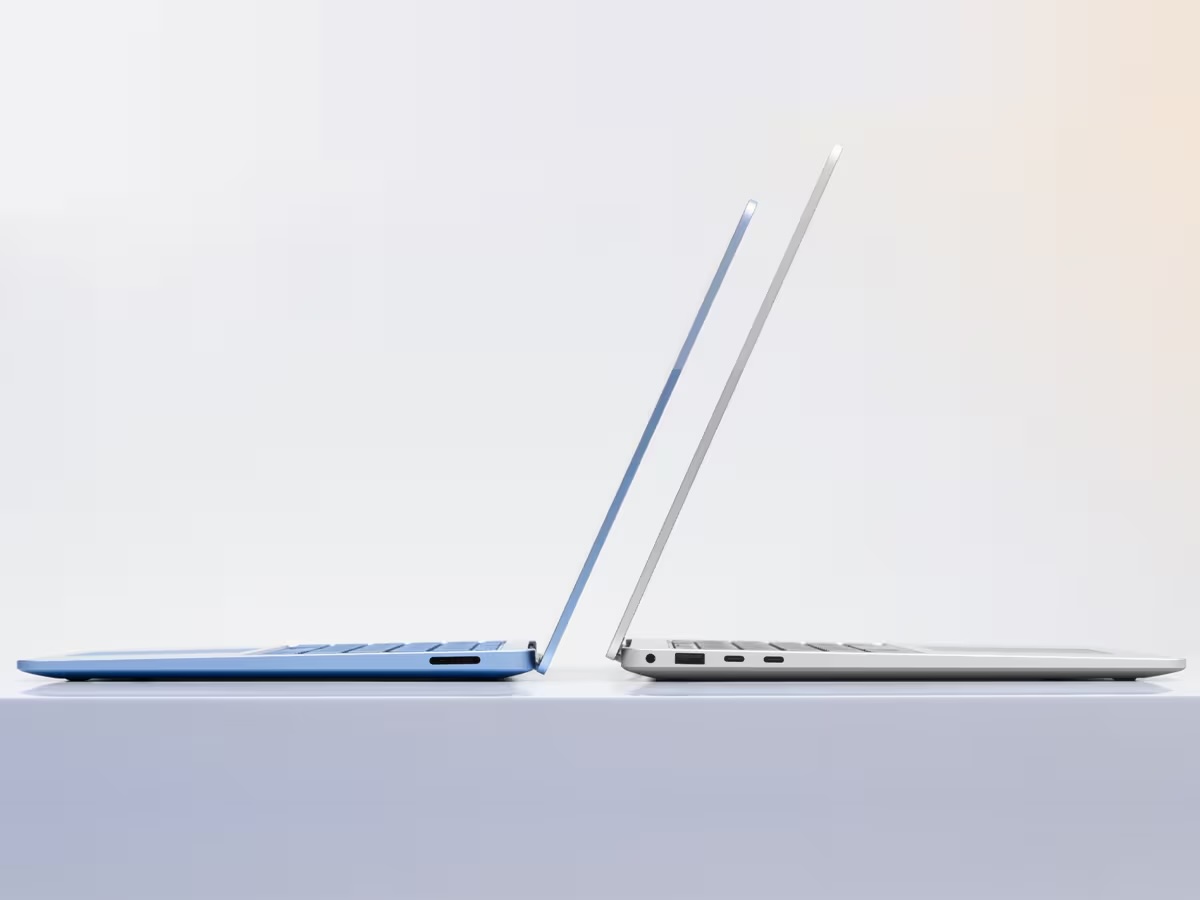
Note that in video playback, Apple prefers to gauge the autonomy of its machine in streaming video playback on Apple TV+, a more widespread use according to the manufacturer. On this point, Microsoft does not have any figures to communicate. We will obviously try to verify the manufacturer’s statements once the machine is in our hands.
The Surface’s 120Hz screen
Microsoft’s Surface Laptop 7 is configurable in 13.8 and 15 inches, just like the MacBook Air. The two panels remain in IPS LCD with a similar definition close to QHD+, without knowing the brightness of the Surface Laptop screen. But the panel here is touchscreen and can go up to 120 GHz while we remain stuck at 60 Hz at Apple.
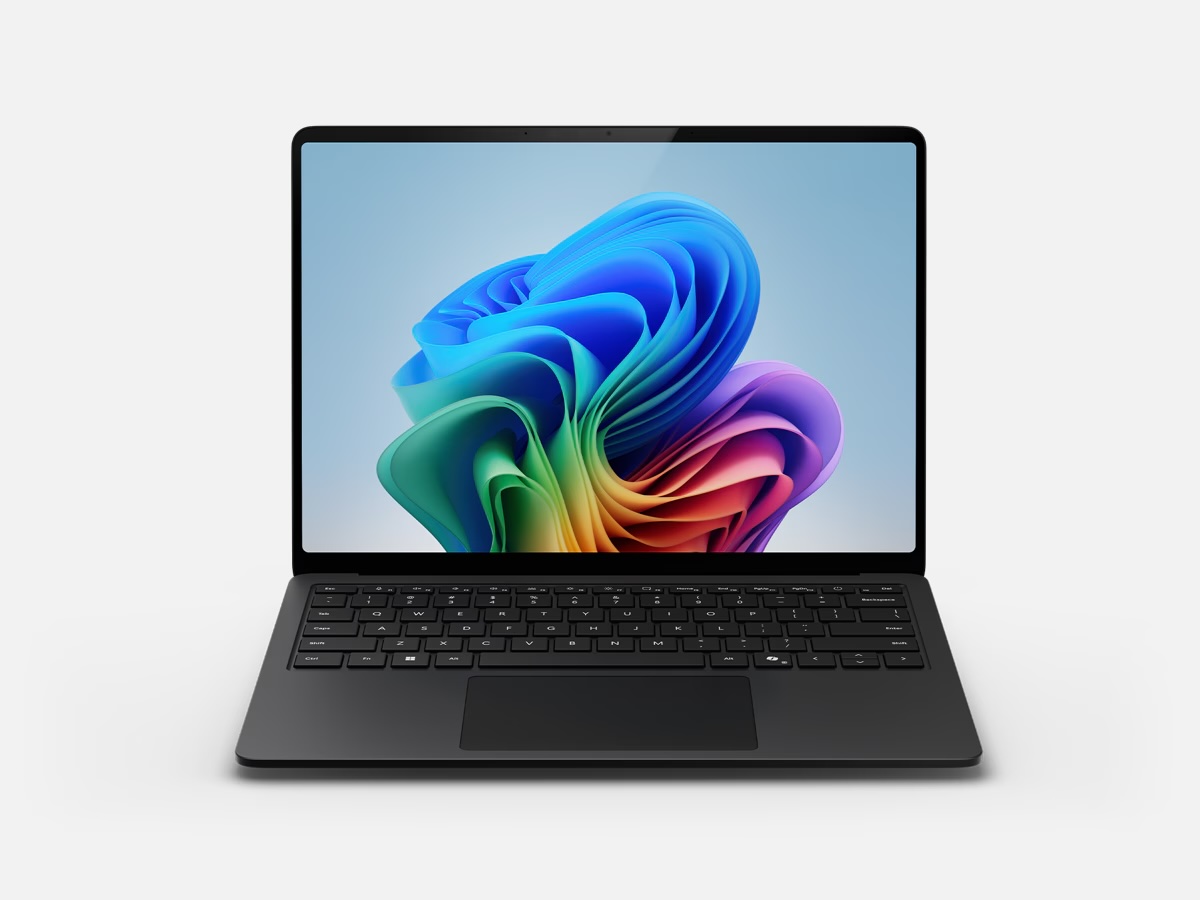
This comfort is not just reserved for gamers since such a refresh rate is a real plus in everyday life, a fluidity bonus reserved for Apple MacBook Pro owners. Good point for the Surface Laptop.
The 16 GB of RAM
While Apple continues to offer machines with 8 GB of RAM, Microsoft sells its Surface Laptop 7 with 16 GB minimum. This is a prerequisite for all Copilot+ PCs and the AI features of the future version of Windows 11, 24H2.
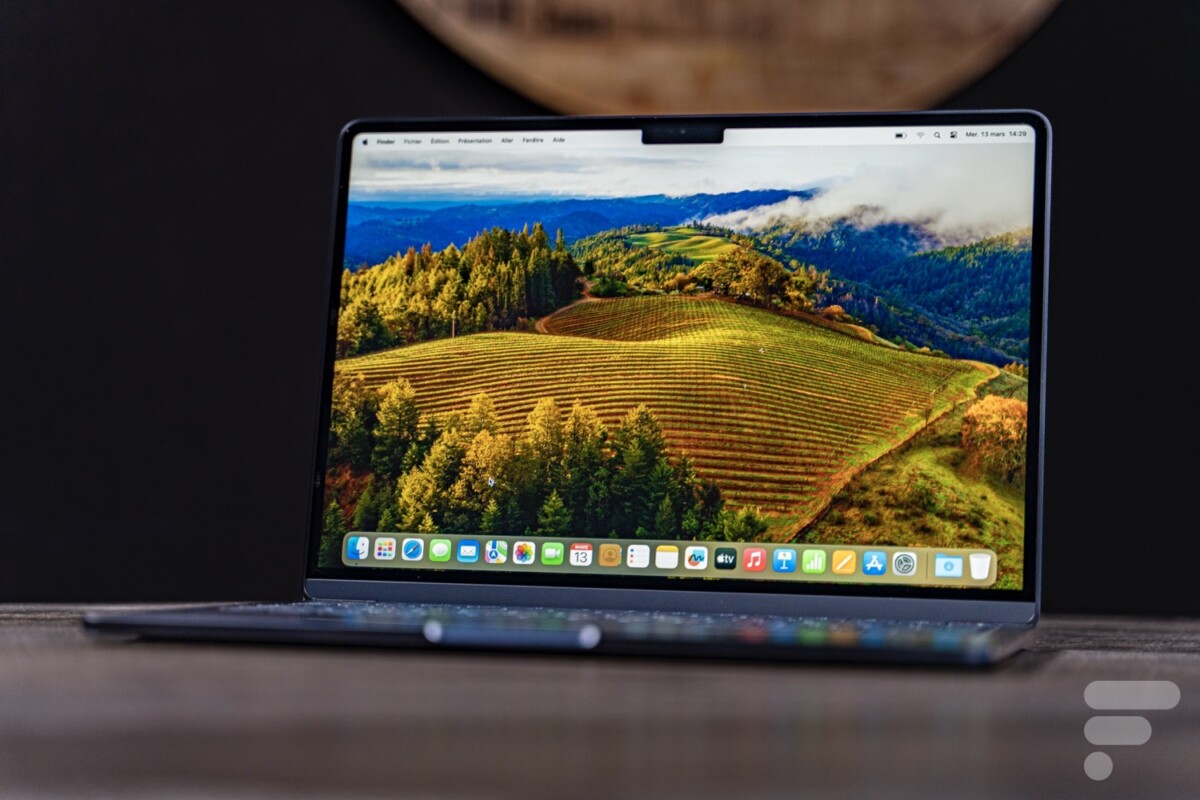
If we still regret Apple’s posture at this level, we are reassured to see that Microsoft and the PC world are democratizing 16 GB of RAM, including for consumer machines. This is a good point for the responsiveness of the system in multitasking contexts, but also for greater robustness over Windows updates, but also on heavier tasks.
AI capabilities
It is complicated to compare the technical sheets of Microsoft’s Surface Laptop with the MacBook Air M3 in terms of AI, since Apple in no way specifies the calculation precision of its figure of 18 TOPS for its Neural Engine, so that the Snapdragon chip reaches 45. However, we imagine that the calculation precision is indeed int8, in which case, the raw calculation capacities would be significantly lower.
Here, it is on the software proposals that Microsoft’s device will stand out, with massive integration of Copilot in all facets of Windows, and in particular the famous Recall functionality which remembers all your actions on your PC.
On Mac, the Neural Engine is also deeply integrated into the system, whether it is the Spotlight search tool, character recognition, voice diction, while software like Topaz AI and Adobe suite also uses its capabilities for video and audio processing. It’s not as exploited as on iPhone, but that could change.
Apple is expected to make big announcements at WWDC in June, but in the meantime, the realization of AI on our PCs will first take place on Surface Laptops and future machines from third-party manufacturers.
A slightly lower price for Microsoft
Microsoft can boast of offering a Surface Laptop between 50 and 100 euros cheaper than the MacBook Air M3 depending on the diagonal, this is at the cost of a few concessions.
Be careful though, if you have 16 GB of RAM for 1199 euros for the 13.8 inch version from Microsoft, this is a configuration with a Snapdragon X Plus chip and not Elite. According to the manufacturer’s promises when announcing this variation last month, it would still be 10% more efficient than the M3 chip in multi-core.
If the performance gap is confirmed, such pricing positioning would be to Microsoft’s advantage this year in the mid-range laptop PC market.
